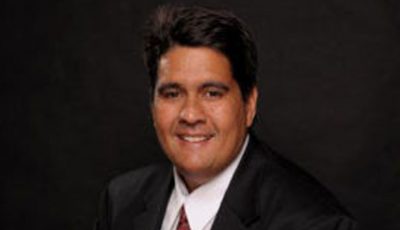Hotel, motel, Patel
The alliteration in our title was previously used as a slur at the number of Indian-descent proprietors of inns in North America who are from India. This was the case in Bonham, Texas’ America’s Best Value Inn where I was billeted not too long ago. I also found the phrase, “it takes a family to make a dimsum” true in the Canadian prairie in the ’70s where the Chinese ran restaurants in small towns of mostly Scandinavian and Slavic descents.
My daughter and 6-year-old grandson took me last week to a riverboat ride in Chicago toward Chinatown when we passed a docked boat flying a Philippine flag in front of a semi-circular building that had international flags on its river front. International, multiethnic and interreligious qualities of American metropolis is foisting the possibility of both real diversity and, perhaps, even authentic integration, in the mosaic sense, of merged peoples and ethnicities from around the world.
Chinatown itself in the Southside of Chicago had workers and customers attired in veils and scarves, white kufis and black yarmulkas, all in the same place. Halal and Kosher shops were not too far from each other, though I must confess that the pinakbet at the Pilipino store my daughter gets her meat barbecues and fresh fish left a lot to be desired on this Ilocakano palate.
One of the gifts of the urban center is precisely the intentional setting of amicable presence and interchange between traditionally warring factions elsewhere. My chaplain brother was in a group of religious clerics who considered taking on the offer of the newly established City of Kapolei to build a singular religious structure with many fronts that would host religious groups and functions in the city. They never turned the offer into a groundbreaking event, but the intent was there.
While living in Uptown Chicago in the late ’70s and early ’80s, the local community college offered courses on 48 languages identified as spoken in the area. The new French market near the Chicago train station by Canal St. smells of various cuisine from former French colonies around the world, beyond the offerings of the old Latin quarters by the Seine. The aroma of French breads and pastries wafted us back to one August morning in Montmartre when we innocently shot our weeklong budget on a Middle Eastern hotel because tourists dominated the Arc de Triomphe and Paris that time of the year while the locals vacationed in the Cote d’Azur and visitors were scalped helpless to the bone.
In my daughter’s home along the boundary line of Barrington and Palatine, Illinois, residents jog in the morning and I was pleased to hear Urdu spoken among their ranks. The restaurant where I was taken to lunch was named Kai Yee, easily an Anglicized “chao yi” or “qiao yi”. Don’t matter. Chinese, Koreans, Japanese, South and Southeast Asians numbered among the customers on the hour we were there. There were no quarrels on boundary lines, psychological and geographical. The distinct qualities of each did not disappear but they were not on each other’s throat over differences.
Not so in some quarters. Delineated boundary is today’s “conservative” agenda. Ukraine just received a suggestion from one of its billionaires to build a wall at the border of Russia and Ukraine; a task he estimated can be done in six months. This is meant to stem the flow of Russian armaments that arms the pro-Russian population of the Crimea and East Ukraine.
We are familiar with this perspective in the U.S. where NAFTA drew us to Canada but had us convinced that the dreaded Mexicans attracted their cousins all the way from Columbia and Ecuador through Panama, Nicaragua, El Salvador, Honduras, Belize, and Guatemala to “surge” the border into California, New Mexico, Arizona and Texas. Ola! Why do you think we built the ineffective but expensive virtual border fence now staggered at the coast-to-coast Mexican-U.S. border?
China, Japan, and South Korea also haggle geographical boundaries, though the squabble in East Asia’s continental shelf is clearly for the oil. But strict geographical boundary is the impulse to protect national sovereignty in a time when the very notion of nation-state, a hangover from colonial times, is very much in question.
At the personal level, psychological space is at a premium, and intellectual integrity sacrosanct. I just left three years of university where the “footnote” ruled (other people share my thoughts), and most intellectuals quoted sources to bolster their positions. In democracies, law is predicated on precedence, more often in favor of limits rather than possibilities.
It was in China that I read the story of the Life of Pi. The main character is Pi Patel and that’s how the “Patel” from our title, previously used pejoratively, is now to me a brand of unique individual distinction worn with pride. My grandson’s favorite game is Lego, constructing without instruction book and/or glue. The compassion in our time is to manifest the desire to see and hear individuals freely claim, “I am,” finishing the sentence with the fullness of their existence.



























